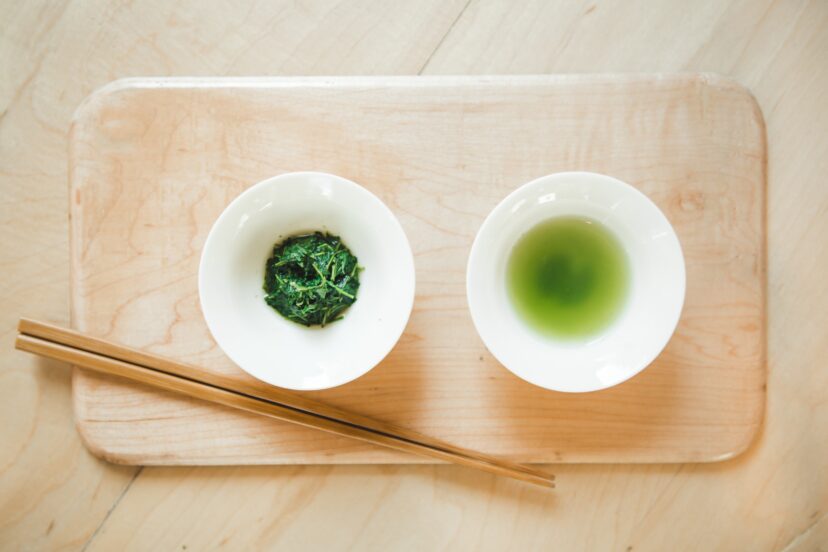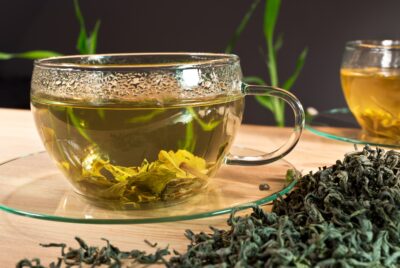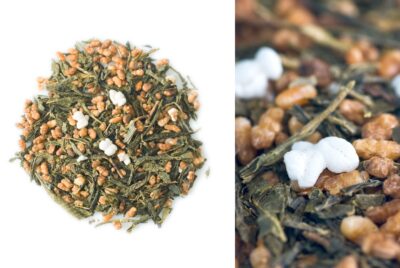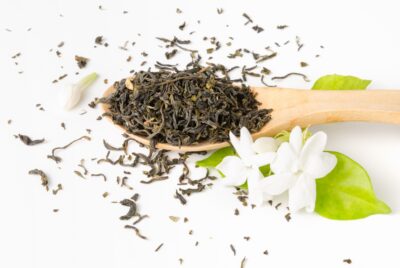Sencha Tea: A Journey into the World of Green Elegance
What is Sencha Tea?
Have you ever wondered what makes Sencha tea so special? As a tea enthusiast, I’ve delved into the world of Sencha and discovered its unique charm. Sencha tea, a type of Japanese green tea, is cherished for its refreshing flavor and numerous health benefits. Unlike other teas, Sencha is steamed immediately after harvesting, which preserves its vibrant green color and fresh taste.
Health Benefits of Sencha Tea
Rich in Antioxidants
One of the standout features of Sencha tea is its high antioxidant content. These antioxidants, particularly catechins, help combat free radicals in the body, promoting overall health and reducing the risk of chronic diseases.
Aids in Weight Loss
Looking to shed a few pounds? Sencha tea can be a great addition to your diet. Its natural compounds help boost metabolism and burn fat, making it an excellent choice for weight loss enthusiasts.
Boosts Immune System
Sencha tea is packed with vitamins and minerals that strengthen the immune system. Regular consumption can help ward off common illnesses and keep you feeling your best.
Enhances Mental Alertness
Need a mental boost? Sencha tea contains just the right amount of caffeine to enhance alertness without the jitters. It’s perfect for those times when you need to stay focused and productive.
How to Brew Sencha Tea
Choosing the Right Tea Leaves
The first step to brewing the perfect cup of Sencha is selecting high-quality tea leaves. Look for bright green leaves with a fresh aroma.
Try Using Filtered Water
The quality of water can significantly affect the taste of your Sencha. If your tap water is hard or has a strong flavor, try using filtered water for a purer taste.
The Ideal Water Temperature
Water temperature plays a crucial role in brewing Sencha. The ideal range is between 160°F to 170°F (70°C to 80°C). Too hot, and you’ll scorch the leaves; too cold, and the flavors won’t fully develop.
Steeping Time
Steep your Sencha for about 1 to 2 minutes. This short steeping time ensures a balanced flavor without any bitterness.
Types of Sencha Tea
Asamushi Sencha
Asamushi Sencha is lightly steamed, resulting in a delicate flavor and light green color. It’s perfect for those who prefer a milder taste.
Fukamushi Sencha
Fukamushi Sencha undergoes a longer steaming process, giving it a deeper color and richer flavor. It’s ideal for those who enjoy a robust tea experience.
Chumushi Sencha
Chumushi Sencha strikes a balance between Asamushi and Fukamushi, offering a moderate flavor and aroma. It’s a great choice if you’re looking for something in between.
Shincha
Often called “new tea,” Shincha is the first harvest of Sencha tea leaves, typically picked in late April to early May. This tea is highly prized for its fresh, vibrant flavor and high nutrient content, including a higher concentration of amino acids like theanine.
Hachijuhachiya Sencha
This is a special type of Sencha harvested on the 88th night after the first day of spring according to the traditional Japanese calendar. It’s believed to bring good luck and has a well-balanced flavor profile.
Kabusecha
Although not strictly a type of Sencha, Kabusecha is often grouped with Sencha teas. It is shaded for about a week before harvest, which gives it a flavor that is richer and more umami-packed than regular Sencha, somewhat between Sencha and Gyokuro.
Gokyujo Sencha
This term refers to premium Sencha, made from the youngest, highest quality leaves. It tends to have a sweeter, more delicate flavor compared to standard Sencha teas.
Aracha
This type of Sencha, known as “crude tea,” is less processed than regular Sencha, retaining stems, leaf fragments, and other parts of the tea plant. Aracha has a more rustic and robust flavor profile.
Ichibancha
The first flush or first harvest of the season, Ichibancha Sencha is considered to be of the highest quality and is known for its fresh, slightly sweet taste.
Nibancha
This is the second harvest of Sencha, occurring in early summer after the first flush. While still of good quality, it tends to be slightly less sweet and more astringent compared to Ichibancha.
Sanbancha
The third harvest, typically occurring later in the summer. This tea is less common and generally considered to be of lower quality compared to the earlier flushes, with a more robust and somewhat bitter flavor.
These varieties of Sencha offer a broad spectrum of flavors and characteristics, allowing tea enthusiasts to explore the subtle differences based on harvest time, processing methods, and cultivation practices
Brief History of Sencha Tea
Sencha tea has a fascinating history that dates back to the 17th century. Introduced by the Japanese monk Baisao, it quickly gained popularity among the Japanese elite. Over time, it became a staple in Japanese tea culture, enjoyed by people from all walks of life.
Sencha Tea Culture and Traditions
Tea Ceremonies
Sencha plays a significant role in Japanese tea ceremonies. These ceremonies are a blend of art and tradition, showcasing the elegance of tea preparation and consumption.
Sencha tea holds a special place in Japanese culture and traditions, serving not only as a popular daily beverage but also as a symbol of refinement and simplicity. Unlike the more formalized Japanese tea ceremony (chanoyu) associated with powdered matcha, the preparation and enjoyment of Sencha are more casual, reflecting the tea’s role in everyday life.
Sencha and the Literati Tradition
The roots of Sencha culture can be traced back to the 17th century, when it was popularized by the monk Baisao. Sencha quickly became the tea of choice for the Japanese literati, who appreciated its simplicity and the meditative experience of brewing it. This cultural movement, known as the “Sencha-do” or “way of Sencha,” emphasized mindfulness and the appreciation of nature, often practiced in a serene setting.
Modern-Day Sencha Practices
In modern Japan, Sencha is the most commonly consumed tea, enjoyed in homes, restaurants, and tea houses. It is often served to guests as a gesture of hospitality and is a staple during social gatherings. Special occasions might involve the use of high-quality Sencha, such as Shincha, the first flush of the year, which is celebrated for its fresh, vibrant flavor.
Are Sencha Tea and Sencha Green Tea the Same?
Yes, ‘sencha tea’ and ‘sencha green tea’ are the same kind of tea. Sencha is a variety of green tea that originates from Japan, and it is the most popular type of green tea in the country.
Sencha Tea vs. Other Green Teas
When it comes to green teas, Sencha stands out, but how does it compare to other popular varieties? Here’s a closer look at how Sencha stacks up against Matcha, Gyokuro, and other green teas.
Matcha vs. Sencha
- Processing: Sencha and Matcha both come from the Camellia sinensis plant, but their processing methods are different. Sencha leaves are steamed, rolled, and dried, while Matcha leaves are ground into a fine powder after being shaded and de-stemmed. This results in a more delicate, fresh taste for Sencha and a richer, creamier flavor for Matcha.
- Flavor: Sencha has a bright, grassy, and slightly astringent flavor, making it a refreshing choice for daily consumption. Matcha, on the other hand, is richer and more umami, with a slightly bitter finish due to the higher concentration of chlorophyll.
- Nutrient Content: Since Matcha involves consuming the entire leaf, it contains more antioxidants, caffeine, and other nutrients compared to Sencha. However, Sencha is still rich in catechins and vitamin C.
Gyokuro vs. Sencha
- Shading: The most significant difference between Sencha and Gyokuro is the shading process. Gyokuro is shaded for about three weeks before harvest, which increases its chlorophyll content and gives it a sweeter, umami-rich flavor. Sencha is grown in full sunlight, resulting in a brisker, more astringent taste.
- Flavor Profile: Gyokuro is known for its deep, sweet flavor with a smooth finish, often described as having a “brothy” or “umami” quality. Sencha’s flavor is lighter, more vegetal, and often has a slight bitterness, especially if brewed at too high a temperature.
- Cost: Due to the shading and care required to produce Gyokuro, it is generally more expensive than Sencha. Gyokuro is often reserved for special occasions, while Sencha is more commonly consumed daily.
Bancha vs. Sencha
- Harvest Time: Sencha is made from the first flush of tea leaves, which are harvested in the early spring, making it more delicate and flavorful. Bancha is made from the second or third flush, or from the larger, older leaves of the tea plant, harvested later in the season.
- Flavor: Bancha has a more robust, less refined flavor compared to Sencha, with a stronger, more astringent taste. It is often described as being slightly woody or earthy.
- Caffeine Content: Since Bancha is made from older leaves, it contains less caffeine than Sencha, making it a good choice for those looking for a milder tea.
Hojicha vs. Sencha
- Roasting: Hojicha is a roasted green tea, typically made from Bancha or Sencha leaves. The roasting process gives Hojicha a distinct toasty, nutty flavor, which is quite different from the fresh, grassy taste of Sencha.
- Caffeine Content: The roasting process reduces the caffeine content in Hojicha, making it an excellent choice for drinking in the evening or for those sensitive to caffeine.
- Flavor: While Sencha is refreshing and slightly astringent, Hojicha offers a warm, comforting flavor profile with hints of caramel or roasted nuts.
Genmaicha vs. Sencha
- Composition: Genmaicha is a blend of Sencha (or Bancha) and roasted brown rice. The addition of roasted rice gives Genmaicha a unique toasty, nutty flavor that contrasts with the fresh, grassy taste of Sencha.
- Flavor: The flavor of Genmaicha is milder and less astringent than pure Sencha, with a slightly sweet undertone from the rice. It’s often enjoyed as a soothing, comforting tea.
- Caffeine Content: The caffeine content in Genmaicha is lower than in pure Sencha, as the roasted rice dilutes the tea leaves. This makes Genmaicha a popular choice for those who want a lighter green tea experience.
Comparison Summary
Sencha stands out among green teas for its fresh, grassy flavor and vibrant green color, but it offers a different experience compared to other varieties like Matcha, Gyokuro, and Bancha. Each type of green tea has its unique characteristics, influenced by factors like processing, shading, and blending with other ingredients. Whether you prefer the robust flavor of Gyokuro, the nutty notes of Hojicha, or the delicate sweetness of Sencha, there’s a green tea to suit every palate and occasion
Best Times to Drink Sencha Tea
Morning Routine
Start your day with a cup of Sencha to wake up your senses. Its gentle caffeine content will give you the energy boost you need.
Afternoon Pick-Me-Up
Feeling the afternoon slump? A mid-afternoon cup of Sencha can rejuvenate you and help you power through the rest of your day.
Evening Relaxation
While Sencha does contain caffeine, it’s still gentle enough to enjoy in the evening. A warm cup can help you unwind and relax before bedtime.
Culinary Uses of Sencha Tea
Cooking with Sencha
Sencha isn’t just for drinking! Its unique flavor can enhance various dishes. Try using Sencha-infused broth in soups or as a base for cooking rice.
Make Sencha-Infused Sweets
Sencha can also add a delightful twist to desserts. You can infuse Sencha in syrups or creams to make delicious green tea-flavored desserts like panna cotta, ice cream, or even macarons.The possibilities are endless.
Tips for Buying Sencha Tea
Selecting High-Quality Sencha
When buying Sencha, look for bright green leaves and a fresh, grassy aroma. Avoid dull or yellowing leaves, which indicate poor quality.
Recognizing Authentic Sencha
Authentic Sencha is always labeled as “product of Japan.” Be wary of imitations and always check the origin.
Storing Sencha Tea
Proper Storage Techniques
To keep your Sencha fresh, store it in an airtight container away from light, heat, and moisture. A cool, dark pantry is ideal.
Shelf Life of Sencha Tea
While Sencha doesn’t spoil, it does lose flavor over time. For the best taste, consume it within six months of purchase.
Common Myths About Sencha Tea
Myth 1: All Green Teas are the Same
Not all green teas are created equal. Sencha’s unique processing method and flavor profile set it apart from other green teas.
Myth 2: Sencha Tea is Bitter
When brewed correctly, Sencha is smooth and refreshing, not bitter. The key is in the water temperature and steeping time.
Myth 3: Sencha Tea Is the Same as Matcha Tea
While both Sencha and Matcha are types of Japanese green tea, they are quite different in their cultivation, processing, and preparation methods. Sencha is grown under direct sunlight and is typically steeped in water, whereas Matcha is shade-grown and consumed as a powdered tea whisked in water. This difference in processing gives Sencha a more vegetal and slightly astringent flavor compared to the rich, umami taste of Matcha.
Myth 4: Sencha Tea Contains a High Amount of Caffeine
Many people believe that all green teas, including Sencha, are high in caffeine. However, Sencha contains a moderate amount of caffeine, less than black tea or coffee. The caffeine content in Sencha can also vary depending on factors like the quality of the leaves, how it’s brewed, and the steeping time. This makes Sencha a good option for those who want a milder stimulant without the jitters associated with higher-caffeine beverages.
Myth 5: The Bitter Taste of Sencha Indicates High Quality
Some believe that a bitter taste in Sencha is a sign of superior quality, but this is not necessarily true. High-quality Sencha should have a balanced flavor profile that includes sweetness, umami, and a touch of bitterness, without any overwhelming astringency. If Sencha is too bitter, it might be due to over-steeping or using water that is too hot. Proper preparation is key to bringing out the best flavors in Sencha.
Myth 6: Sencha Tea Is Only Enjoyed Hot
Many people believe that Sencha tea should only be consumed hot, but this is far from true. Sencha is incredibly versatile and can be enjoyed both hot and cold. In fact, cold-brewed Sencha, known as “Mizudashi Sencha,” is a popular summertime drink in Japan. Cold brewing highlights the tea’s natural sweetness and reduces its bitterness, making it a refreshing alternative to hot tea during warmer months.
Myth 7: The Green Color of Sencha Indicates Freshness
It’s a common misconception that the greener the tea leaves, the fresher and better the quality of the Sencha. While a vibrant green color is often associated with high-quality Sencha, color alone does not determine the freshness or quality of the tea. Factors such as the specific cultivar, growing conditions, and processing techniques all influence the color of the leaves. Some premium Senchas might have a slightly yellow or darker hue but still offer exceptional flavor and quality.
Tips and Tricks for Enjoying Sencha Tea
These tips and tricks are designed to enhance your experience with Sencha tea, whether you’re brewing a cup to drink, incorporating it into your cooking, or using it in skincare
Experiment with Water Temperature
Don’t be afraid to play around with the water temperature when brewing Sencha. Slightly cooler water can bring out sweeter, more delicate flavors, while hotter water can add a more robust, bitter note.
Try Different Steeping Times
Adjusting the steeping time can also alter the flavor profile of your Sencha. A shorter steeping time can result in a lighter taste, while a longer steep can make the tea stronger.
Pair with Light Snacks
Sencha tea pairs wonderfully with light snacks such as rice crackers, sushi, or even a simple fruit salad. The tea’s grassy notes complement these foods beautifully.
Experiment with Different Brewing Vessels
- Kyusu Teapot: Investing in a Kyusu, a traditional Japanese teapot, can enhance your Sencha brewing experience. Its wide, flat shape allows the leaves to expand fully, releasing their full flavor.
- Glass Teapot: For a visual treat, try using a glass teapot. Watching the leaves unfurl and change the color of the water adds an aesthetic pleasure to your tea time.
Cold Brew for a Refreshing Treat
For a refreshing summer drink, try cold brewing Sencha. Simply steep the tea leaves in cold water for several hours, then strain and enjoy.
Play with Leaf Quantity
Depending on your taste preference, you can adjust the quantity of tea leaves. Using more leaves will result in a stronger brew, while fewer leaves will give you a lighter flavor. Typically, 2 grams of leaves per 100 ml of water is a good starting point.
Double-Brew for Iced Sencha
For a refreshing iced Sencha, double the amount of tea leaves, brew as usual, and then pour over ice immediately after steeping. This method keeps the flavor strong even when the ice melts.
Try Mixing Sencha with Other Herbs
Experiment by mixing Sencha with herbs like mint, lemongrass, or ginger. These additions can complement the green tea’s grassy notes and create a unique, customized blend.
Perfect Your Cold Brew Technique
To make cold brew Sencha, use cool or room temperature water and steep the tea in the fridge for 4-6 hours. This method produces a smooth, less astringent flavor and is perfect for hot days.
Refresh with a DIY Sencha Tea Facial Mist
Steep Sencha, let it cool, and pour it into a spray bottle for a refreshing facial mist. The antioxidants in the tea are great for your skin, offering hydration and protection against free radicals.
Create Sencha Tea Infused Oils
Use Sencha to infuse oils that can be used in dressings or marinades. Simply steep the tea leaves in warm oil (like olive or sesame) for a few hours, strain, and use as desired.
Add a Twist with Lemon or Mint
For a bit of variety, try adding a slice of lemon or a sprig of mint to your Sencha. These additions can provide a refreshing twist to the traditional flavor.
Environmental Impact of Sencha Tea Production
Sustainable Farming Practices
Many Sencha producers are committed to sustainable farming practices. These methods not only protect the environment but also ensure the quality and purity of the tea.
Organic Sencha Tea
Organic Sencha is grown without synthetic pesticides or fertilizers. It’s a healthier option for both you and the planet.
Final Thoughts
Sencha tea is more than just a refreshing beverage. Its deeply rooted cultural tradition reflects the values of simplicity, mindfulness, and connection to nature. From its origins with the Japanese literati to its widespread modern-day consumption, Sencha continues to play a significant role in daily life and special occasions. Its health benefits, diverse varieties, and ease of preparation make it an excellent choice for both seasoned tea enthusiasts and newcomers. Whether you’re seeking a moment of calm or exploring new flavors, Sencha offers a unique and rewarding experience in every cup.
FAQs
What makes Sencha tea different from other green teas?
Sencha tea is unique due to its steaming process, which preserves its green color and fresh flavor.
Can I drink Sencha tea cold?
Absolutely! Cold-brewed Sencha is refreshing and perfect for hot summer days.
Does Sencha tea have caffeine?
Yes, but it has less caffeine than coffee, making it a great alternative for a gentle energy boost.
How should I store Sencha tea?
Store Sencha in an airtight container, away from light, heat, and moisture to keep it fresh.
Can Sencha tea help with digestion?
Yes, Sencha tea can aid digestion and soothe the stomach, making it a great after-meal drink.
How Much Sencha Tea Should I Drink Daily?
Moderation is key. 2-3 cups of Sencha tea per day are generally considered safe and beneficial.
Can I Re-steep Sencha Tea Leaves?
Yes, you can! Sencha leaves can be re-steeped 2-3 times, with each infusion offering a slightly different flavor profile.




